Easy Basil Pistachio Pesto Recipe (Best Homemade!)
Jul 17, 2024, Updated Mar 13, 2025
This post may contain affiliate links. Please read our disclosure policy.
Easy Basil Pistachio Pesto Recipe (Best Homemade!)- it doesn’t get easier than this 5-minute pistachio pesto recipe! Bursting with fresh flavors it’s one of our favorite ways to enjoy pistachio nuts. Use on pasta, mortadella sandwich, as a dip, and more!
You’ll also love my classic pesto and arugula pesto.
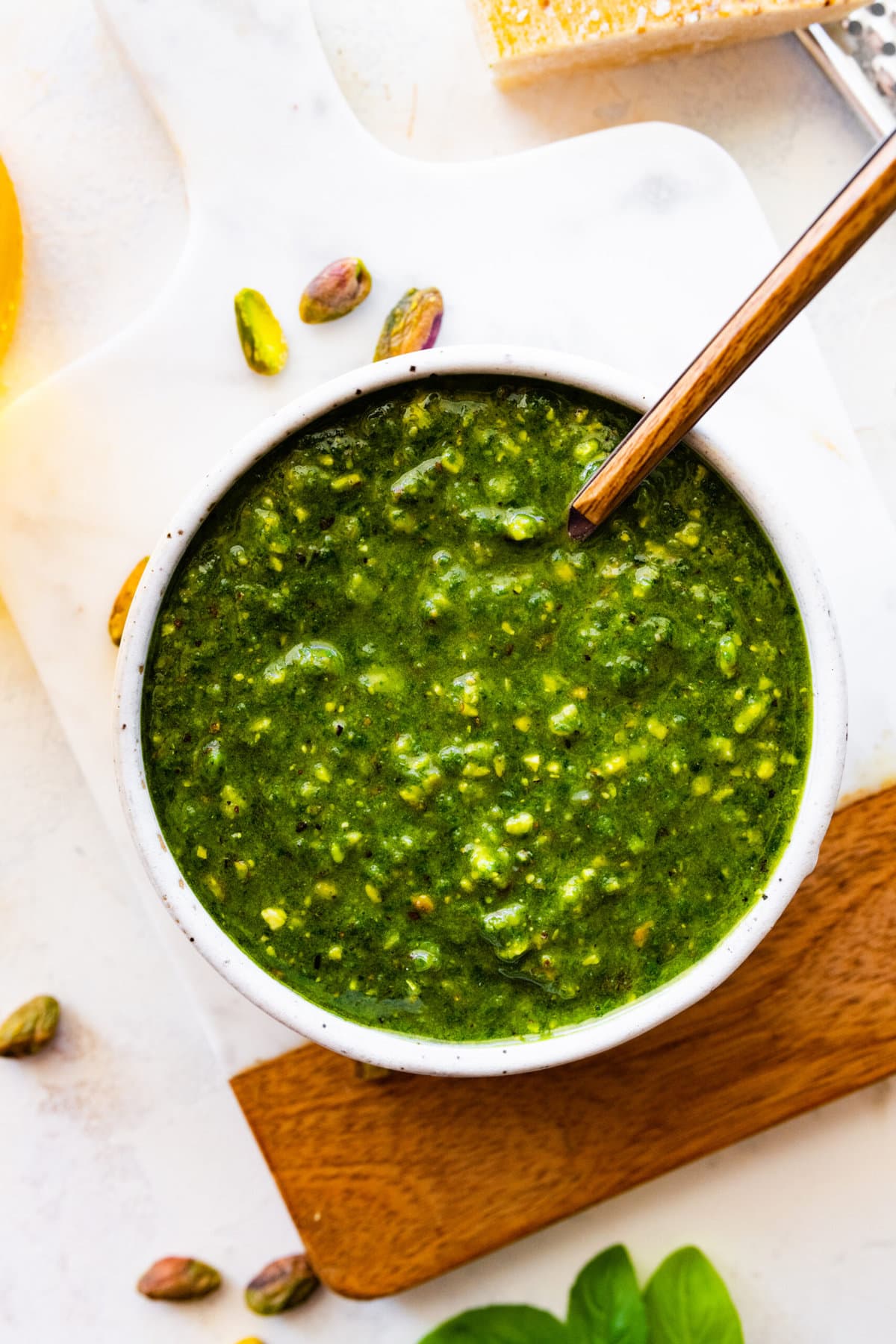
Best Homemade Pistachio Pesto Recipe
This flavorful sauce is an authentic Italian recipe you’ll love. We swap the traditional pine nuts in our classic basil pesto for raw pistachios. Skip the store-bought pesto and make your own- you’ll never return after trying this! I like to make it in large batches and freeze it in ice cube trays for convenience. This is the best pistachio pesto- you’ll make it repeatedly!
You’ll love my Salmon Pesto recipe, Mortadella Sandwich with Pistachio Pesto, and Sweet Pistachio Cream!
Table of Contents
Simple Pistachio Pesto Ingredients
With just a handful of fresh ingredients and a few minutes of preparation, you can whip up a batch of pistachio pesto little time. It’s a simple and hassle-free way to add gourmet flavor to your meals.
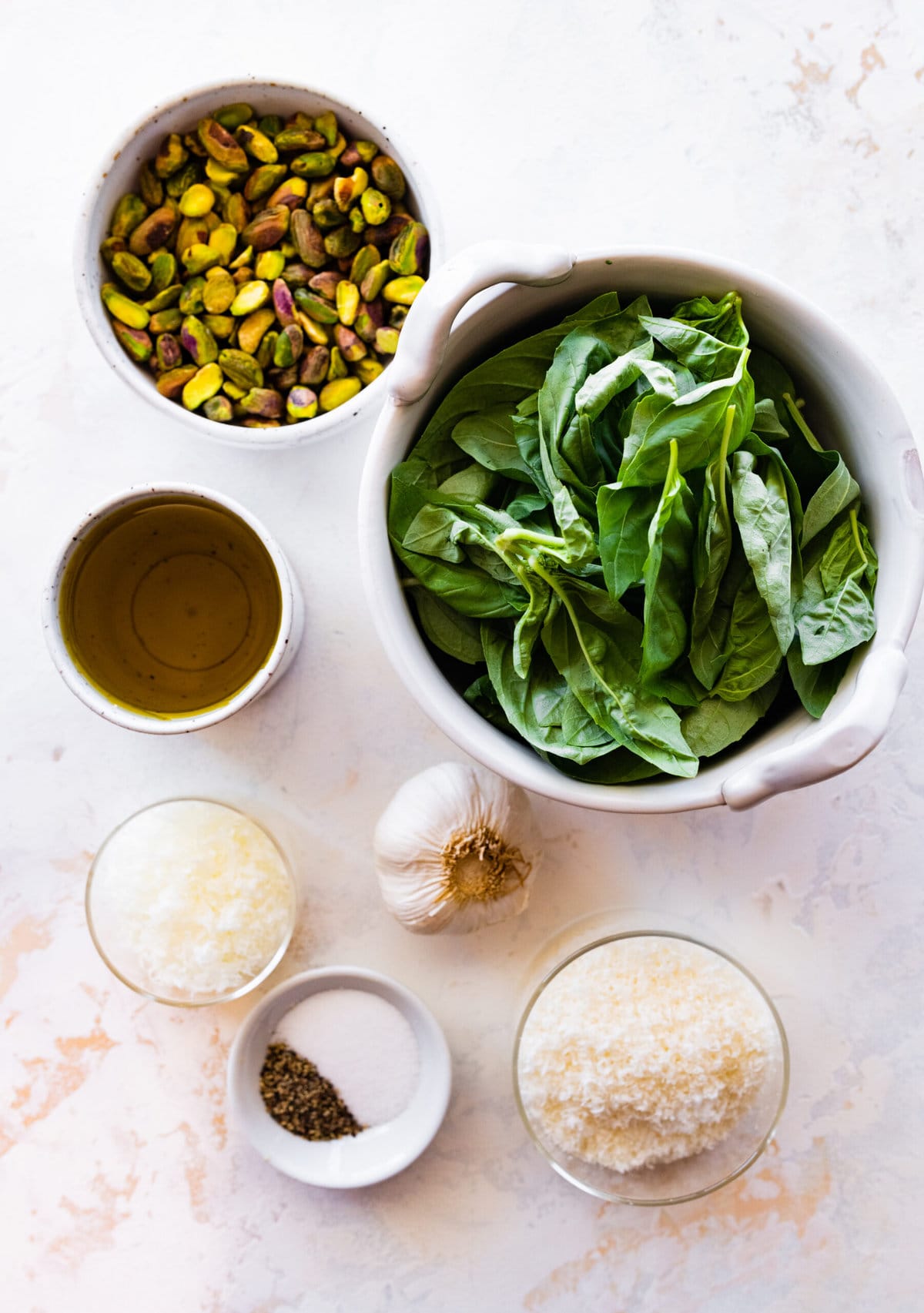
- Shelled pistachios: Pistachio nuts are the primary ingredient in pesto and provide a unique texture. They add a rich, nutty flavor and a vibrant green color. I get the unsalted pistachios so I can control the salt.
- Garlic: A clove of garlic adds a pungent, aromatic flavor to the pesto. It complements the earthy taste of the pistachios and adds depth to the sauce.
- Fresh basil leaves: Basil contributes a fresh and herbaceous aroma to the pesto. It’s a classic ingredient in traditional Italian pesto recipes, providing a bright, floral flavor.
- Parmigiano cheese (parmesan cheese): Freshly grated Parmigiano cheese adds a rich and savory taste to the pesto. It enhances the creaminess of the sauce and adds a salty kick.
- Pecorino Romano cheese: Another type of cheese commonly used in Italian cuisine, freshly grated pecorino cheese adds a sharp and tangy flavor to the pesto. It complements the other ingredients and adds complexity to the sauce.
- Extra virgin olive oil: Olive oil serves as the base of the pesto, providing richness and smoothness to the sauce. Use good quality extra virgin olive oil, which has fruity and peppery notes and adds depth of flavor to the pesto. You’ll also need a thin layer of olive oil to preserve the homemade pesto.
- Sea Salt: Salt enhances the overall taste of the pesto, balancing the flavors of the other ingredients. It’s added to taste to ensure the pesto is well-seasoned.
See the recipe card for quantities.
How to Make Pistachio Pesto (step-by-step instructions and photos)
See the printable recipe card at the bottom of this post for more instructions.
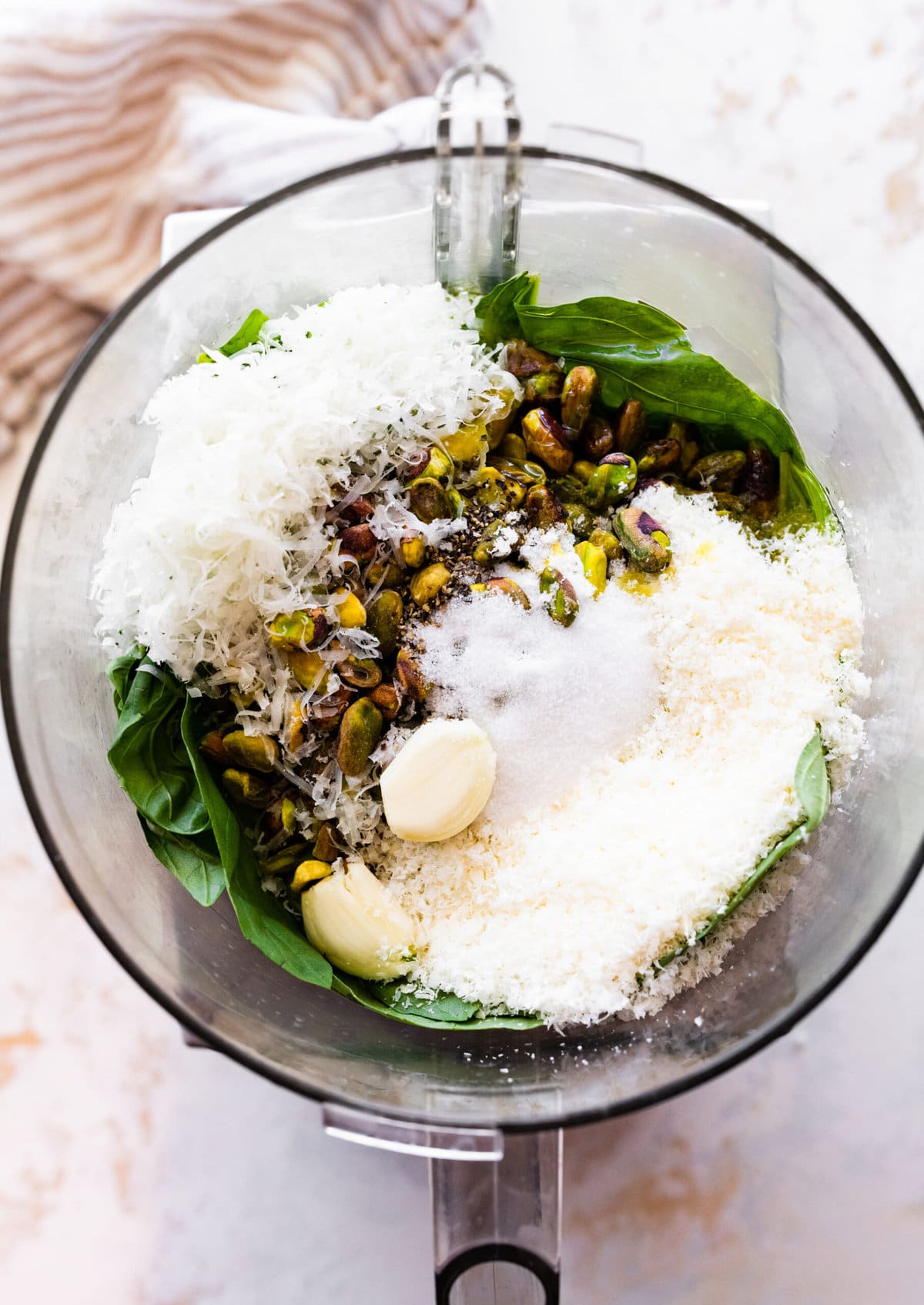
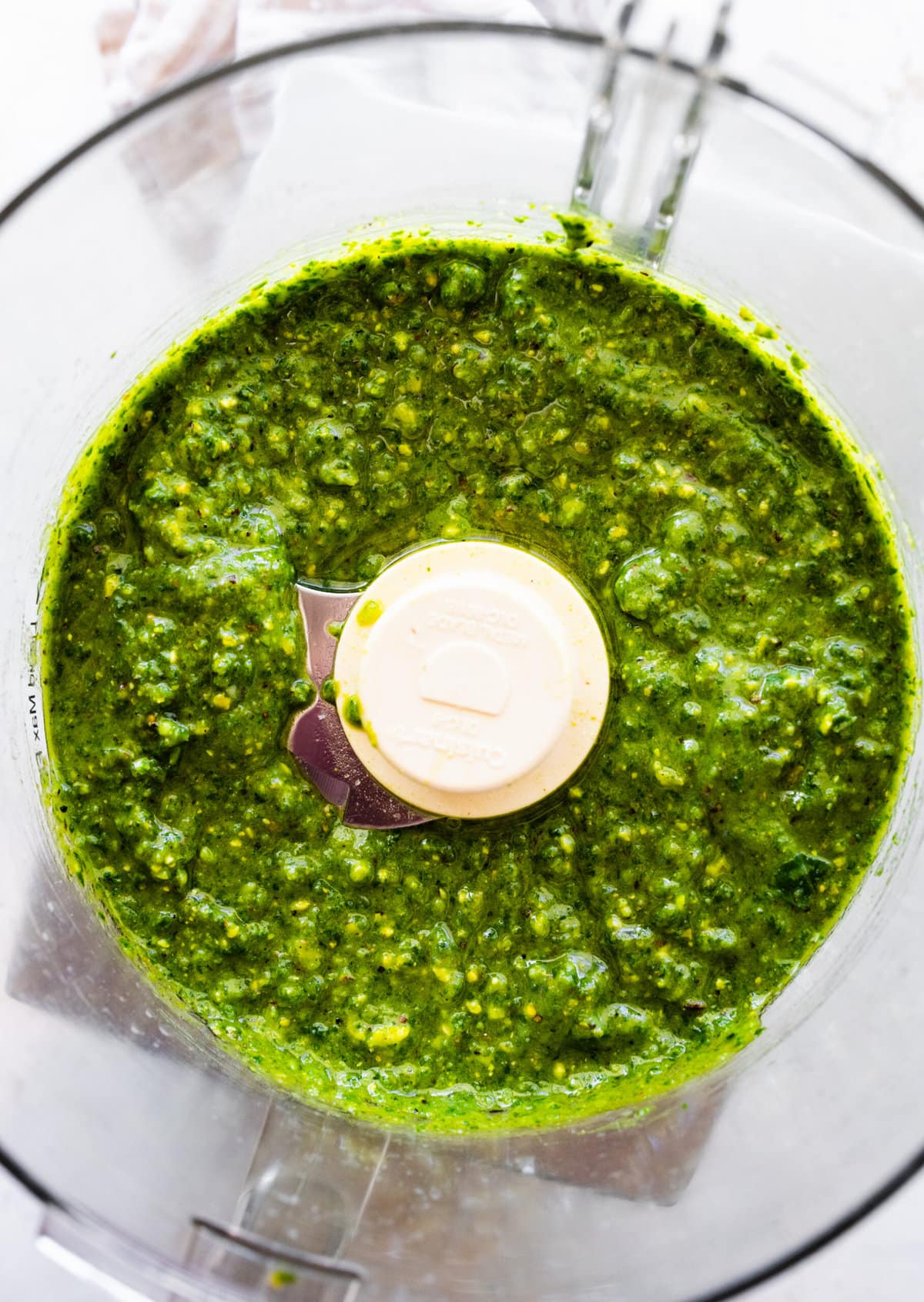
Making your own pistachio pesto allows you to control the ingredients and customize the flavor to your liking. You can adjust the amount of garlic, cheese, and other seasonings to suit your taste preferences, ensuring a truly homemade and personalized experience.
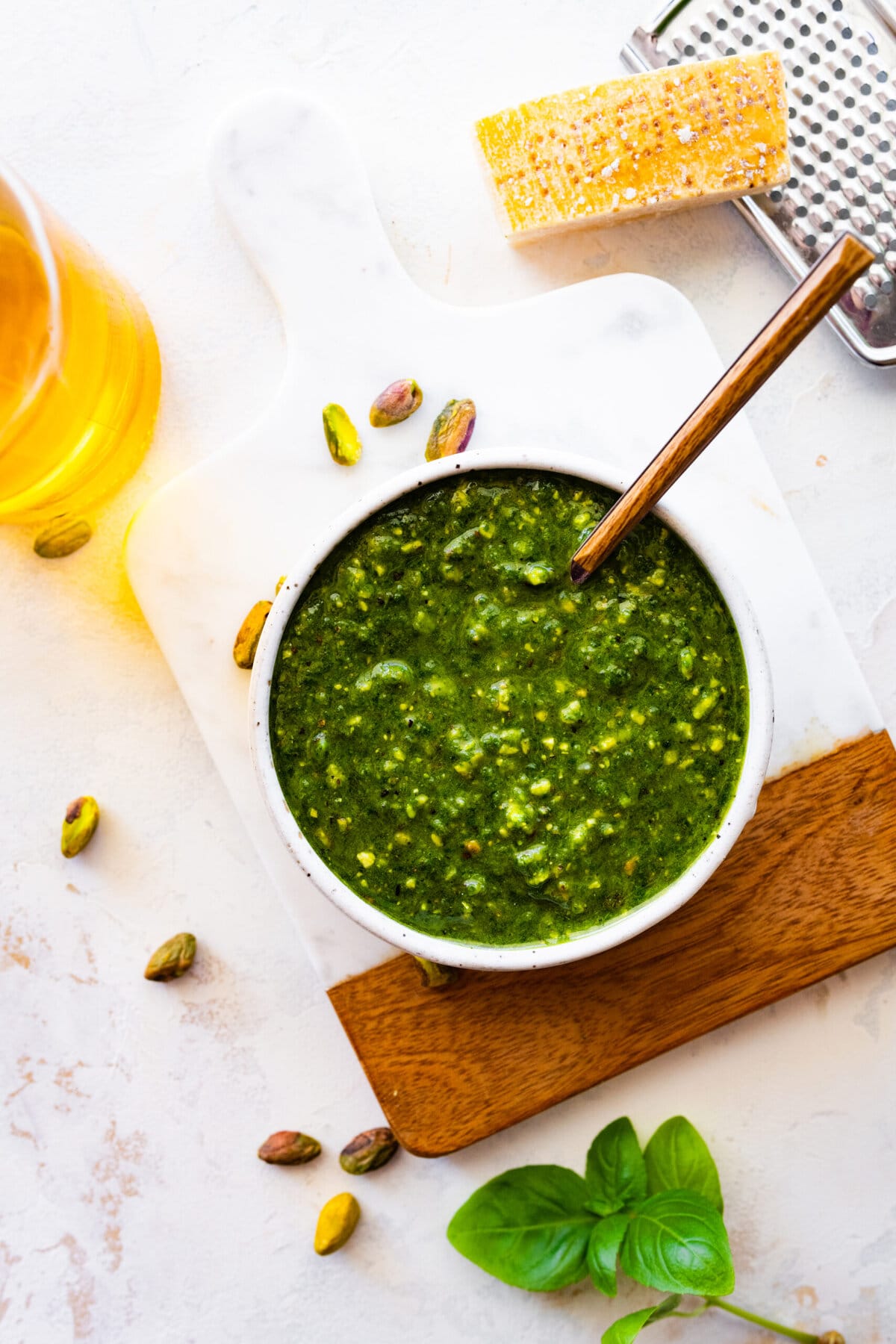
Substitutions
- Nuts: Instead of pistachios, you can use other nuts such as almonds, walnuts, pine nuts, or cashews. Each nut will impart a slightly different flavor profile to the pesto.
- Cheese: If you don’t have Parmigiano or pecorino cheese on hand, you can substitute with other hard cheeses like Asiago, Romano, or aged Gouda. For a dairy-free option, nutritional yeast can be used to add a cheesy flavor.
- Herbs: While basil is traditional, you can experiment with other fresh herbs such as parsley, cilantro, mint, or arugula. Each herb will lend its own unique flavor to the pesto.
- Garlic: If you’re out of fresh garlic, you can use garlic powder or roasted garlic cloves for a milder flavor. Adjust the quantity to taste.
Variations
The next time you try this delicious sauce recipe try these variations:
- Citrus zest: Incorporate lemon or orange zest into the pesto to add a burst of freshness. The citrusy notes beautifully complement the nuttiness of the pistachios.
- Fresh herbs: While basil is traditional, you can experiment with other fresh herbs like parsley, cilantro, or mint to create unique flavor profiles.
- Sun-dried tomatoes: Blend sun-dried tomatoes with the pistachios for a sweet and tangy twist on traditional pesto. The tomatoes add depth of flavor and richness to the sauce. Add a bit of red pepper flakes for a little spice!
Equipment

How to Properly Store Pesto
- Transfer to an airtight container: Once you’ve made the pesto, transfer it to a clean, dry, airtight container. Glass jars or containers with tight-fitting lids work well for storing pesto.
- Make sure to have enough olive oil on hand: To prevent oxidation and preserve the pesto’s vibrant green color, cover the surface with a thin layer of extra virgin olive oil. This creates a barrier that helps protect the pesto from air exposure.
- Seal the container tightly: Ensure that the container is sealed tightly to prevent air from getting in. This helps maintain the freshness and flavor of the pesto for a longer period.
- Refrigerate promptly: Place the airtight container of pesto in the refrigerator as soon as possible after making it.
- Use within a few days: Homemade pesto is best when consumed fresh. While properly stored pesto can last for several days in the refrigerator, it’s recommended to use it within 3 to 7 days for optimal freshness and flavor.
- Freeze for longer storage: If you’re not planning to use the pesto within a few days, you can freeze it for longer storage. Transfer the pesto to an airtight container or ice cube trays, leaving some space for expansion, and freeze it. Frozen pesto can last for several months in the freezer. Thaw it in the refrigerator overnight before using it.
Top tips
- Use fresh, high-quality ingredients: Opt for fresh basil leaves, good-quality shelled pistachios, and freshly grated Parmigiano and pecorino cheeses for the best flavor. The quality of your ingredients will greatly impact the taste of your pesto.
- Add olive oil gradually: When blending the ingredients, gradually drizzle in the extra virgin olive oil while the food processor or blender is running. This helps emulsify the pesto and achieve a smooth, creamy texture.
- Scrape down the sides: Stop the food processor or blender occasionally to scrape down the sides with a spatula. This ensures that all the ingredients are evenly incorporated and prevents any chunks from being left behind.
- Store properly: Transfer the pesto to an airtight container and cover the surface with a thin layer of olive oil to prevent oxidation. Store it in the refrigerator and use it within a few days for optimal freshness.
FAQs
Yes, you can freeze pistachio pesto for longer storage. Portion the pesto into ice cube trays or small containers, then freeze until solid. Once frozen, transfer the pesto cubes or portions to a resealable bag or container for easy storage. Frozen pistachio pesto can last for several months in the freezer.
If your pistachio pesto has become too thick, you can thin it out by adding a little extra olive oil or water until you reach the desired consistency. Start with small amounts and adjust as needed until the pesto reaches the desired thickness.
Yes, you can use roasted pistachios instead of raw ones to make pistachio pesto. Roasted pistachios will add a deeper, richer flavor to the pesto compared to raw pistachios. Just be sure to adjust the seasoning accordingly, as roasted pistachios may already have some salt added.
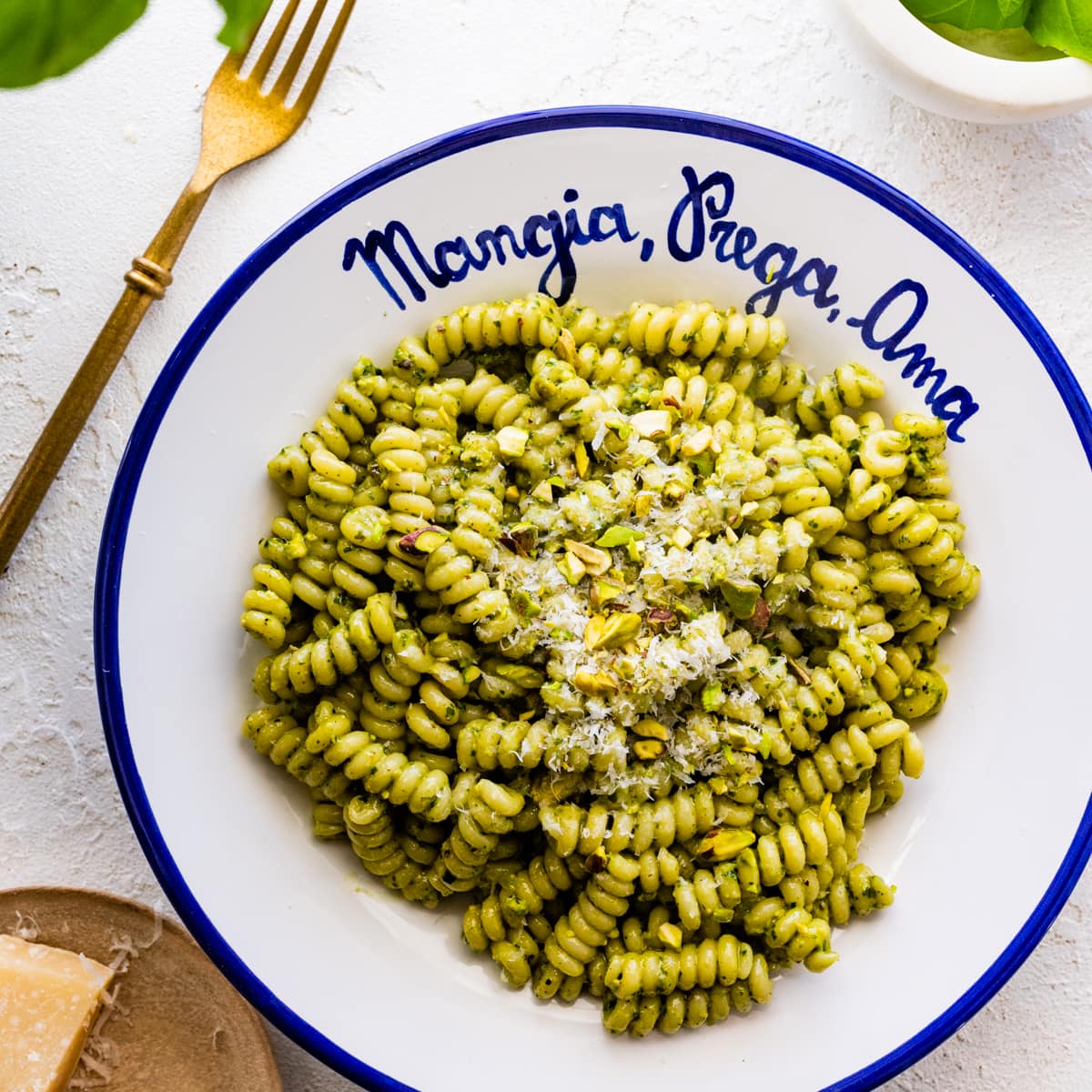
More Italian Recipes
Looking for other recipes like this? Try these:
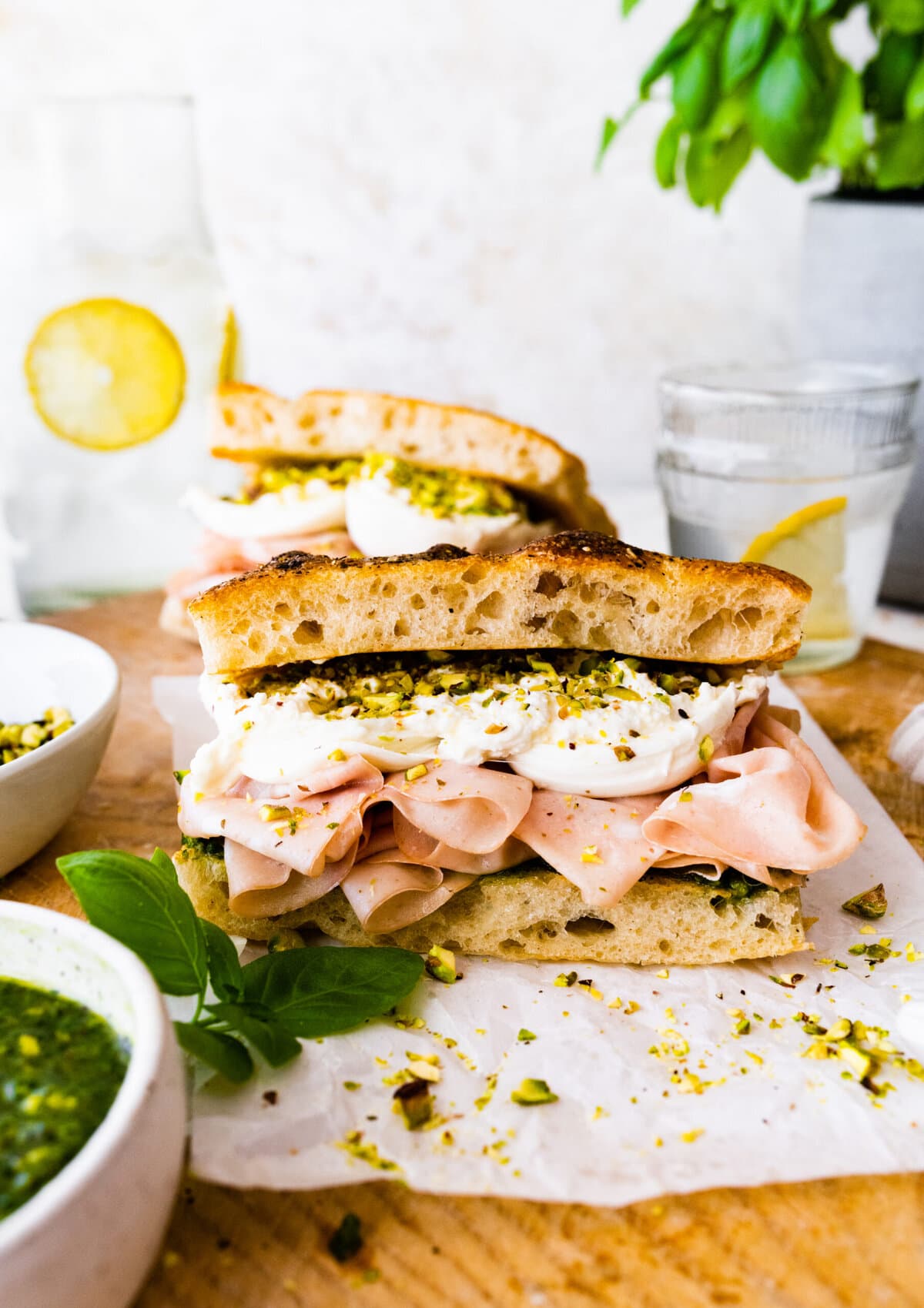
Ways to use Pistachio Pesto
Use your delicious pesto in different ways!
- Pasta sauce: Toss your favorite pasta with pistachio pesto for a simple yet flavorful pistachio pesto pasta dish. It works well with various types of pasta, such as spaghetti, penne, or farfalle.
- Pesto pizza: Use pistachio pesto as a sauce for homemade pizza. Spread it on pizza dough, top with your favorite toppings such as mozzarella cheese, cherry tomatoes, and fresh basil, then bake until golden and bubbly.
- Sandwich spread: Spread pistachio pesto on bread or a sandwich wrap to add flavor to your sandwiches. It pairs well with roasted vegetables, grilled chicken, or turkey.
- Salad dressing: Thin out pistachio pesto with a little extra virgin olive oil, lemon zest, and lemon juice to create a vibrant salad dressing. Drizzle it over mixed greens, cherry tomatoes, avocado, and grilled shrimp or chicken for a delicious salad.
- Pesto bruschetta: Spread pistachio pesto on toasted baguette slices and top with sliced tomatoes, fresh mozzarella, and a drizzle of balsamic glaze for a tasty appetizer or snack.
- Roasted Portobello Caps: For a savory appetizer or side dish, fill mushroom caps with pistachio pesto and breadcrumbs, then bake until tender and golden.
💙 MADE THIS RECIPE AND LOVED IT? 💙 Please leave a ⭐️STAR rating and COMMENT below- I love connecting with you! Tag me with your creations on Instagram and find me on Pinterest.
Pistachio Pesto Recipe
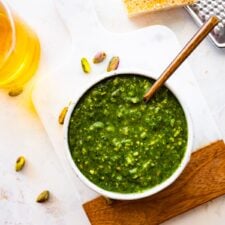
Ingredients
- 1 cup shelled pistachios, unsalted, you can use raw or raosted
- 1-2 cloves garlic, adjust to taste
- 2 ½ cups fresh basil leaves, washed
- ½ cup freshly grated Parmigiano cheese
- ¼ cup freshly grated pecorino cheese
- ½ cup extra virgin olive oil, you made a little more
- Salt and black pepper to taste
Instructions
- Prepare the ingredients: Peel and crush the clove of garlic. Wash and dry the basil leaves. Grate the Parmigiano and pecorino cheeses.
- Blend the ingredients: In a food processor or blender, combine the shelled pistachios, crushed garlic, fresh basil leaves, grated Parmigiano cheese, grated pecorino cheese, and salt to taste.
- Add olive oil: With the food processor or blender running, gradually pour in the extra virgin olive oil in a steady stream. Continue pulsing until the ingredients are well combined and form a smooth paste. Add a little extra olive oil for a thinner pesto. You may need to occasionally stop and scrape down the bowl’s sides or blender pitcher.
- Taste and adjust the seasoning: Once blended, taste the pesto and adjust the seasoning if necessary. Add more salt if desired.
- Serve or store: Transfer the pistachio pesto to a jar or airtight container. You can use it immediately as a sauce for pasta, spread it on toast, a sandwich, or dip. If storing, cover the top of the pesto with a thin layer of olive oil to prevent oxidation and refrigerate. Refrigerate for 5-7 days, or freeze for up to 3 months. Store in ice cube trays or freezer bags for convenience.
- Enjoy your homemade Italian pistachio pesto!
Notes
- Use fresh, high-quality ingredients: Opt for fresh basil leaves, good-quality shelled pistachios, and freshly grated Parmigiano and pecorino cheeses for the best flavor. The quality of your ingredients will greatly impact the taste of your pesto.
- Add olive oil gradually: When blending the ingredients, gradually drizzle in the extra virgin olive oil while the food processor or blender is running. This helps emulsify the pesto and achieve a smooth, creamy texture.
- Scrape down the sides: Stop the food processor or blender occasionally to scrape down the sides with a spatula. This ensures that all the ingredients are evenly incorporated and prevents any chunks from being left behind.
- Store properly: Transfer the pesto to an airtight container and cover the surface with a thin layer of olive oil to prevent oxidation. Store it in the refrigerator and use it within a few days for optimal freshness.
Nutrition
Nutrition information is automatically calculated, so should only be used as an approximation.
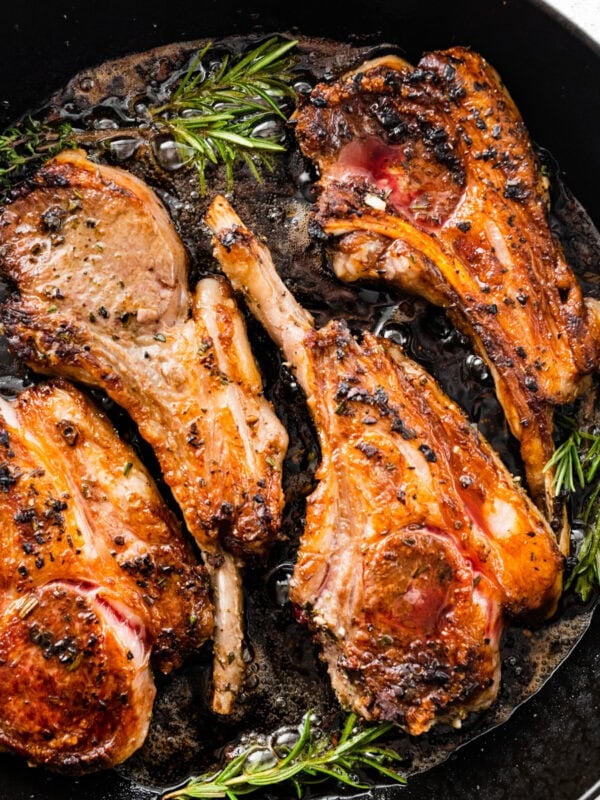
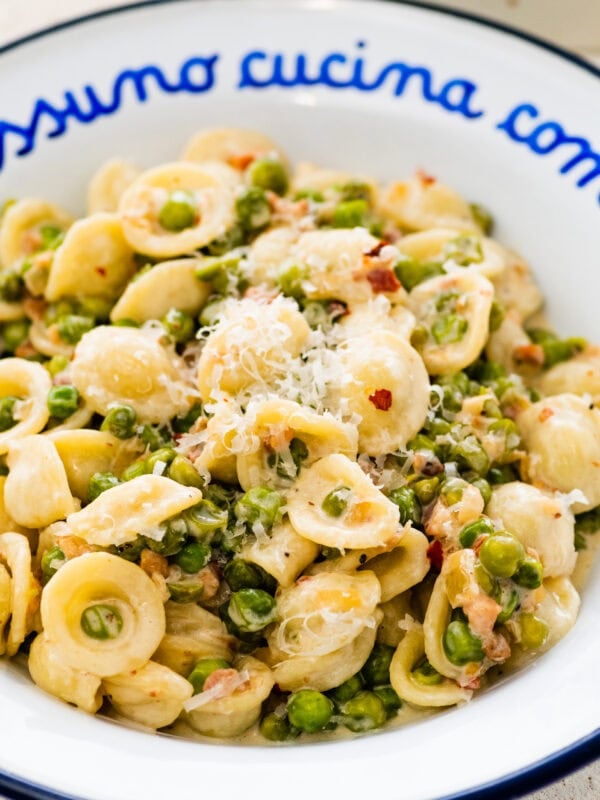
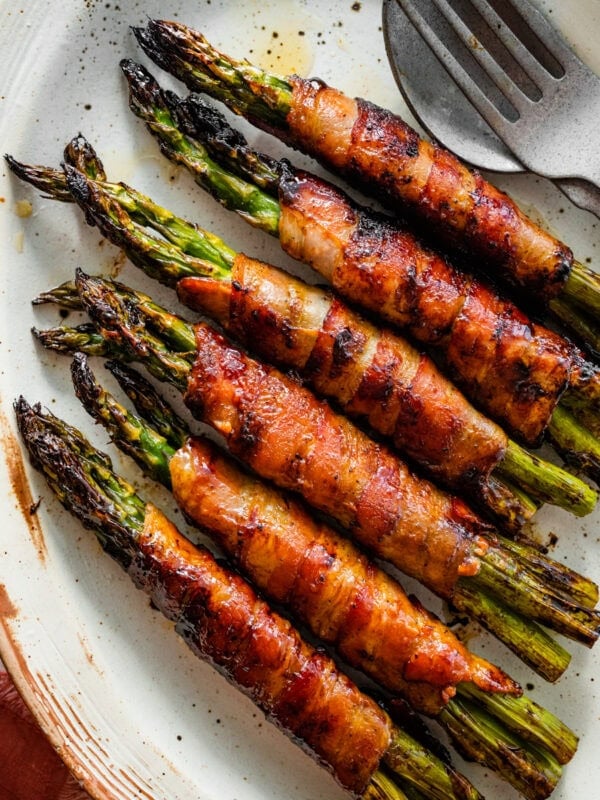
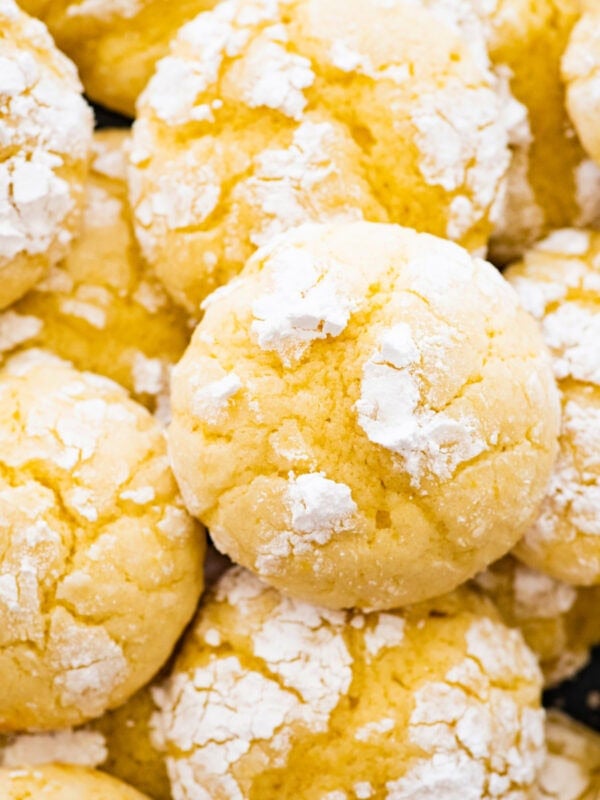
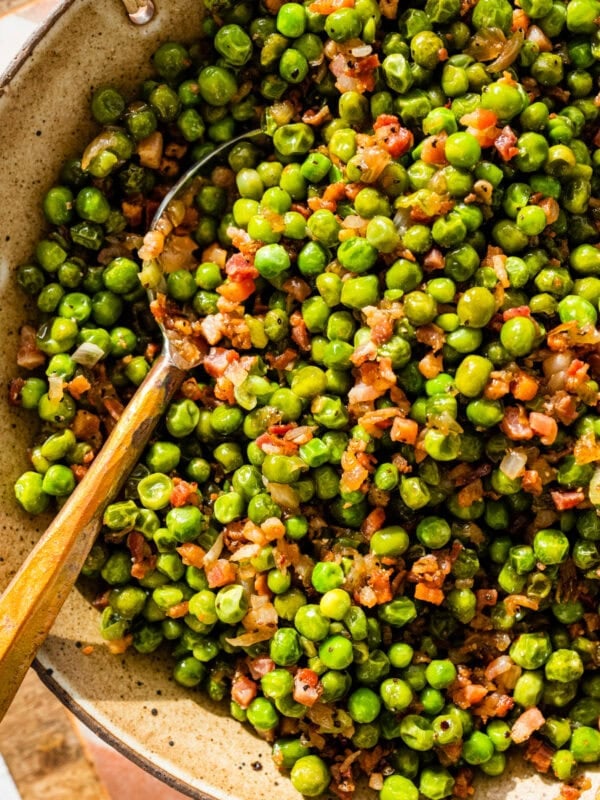
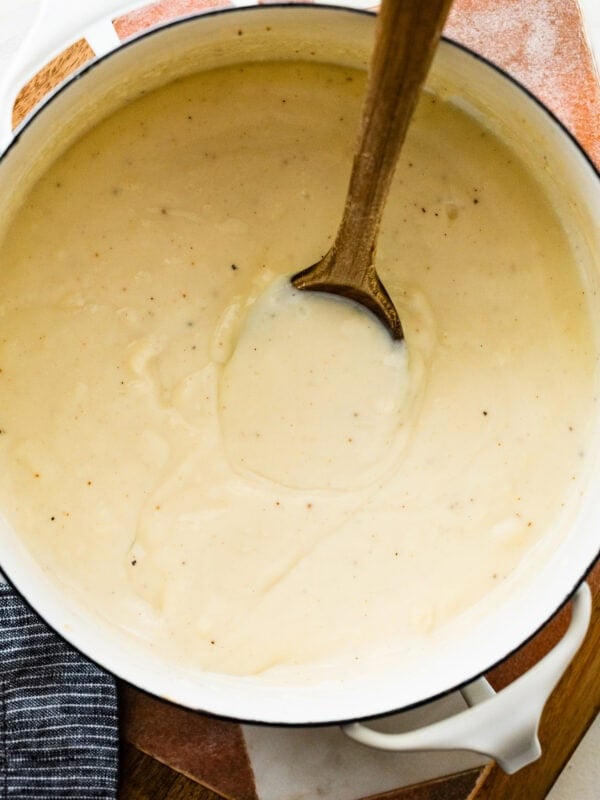
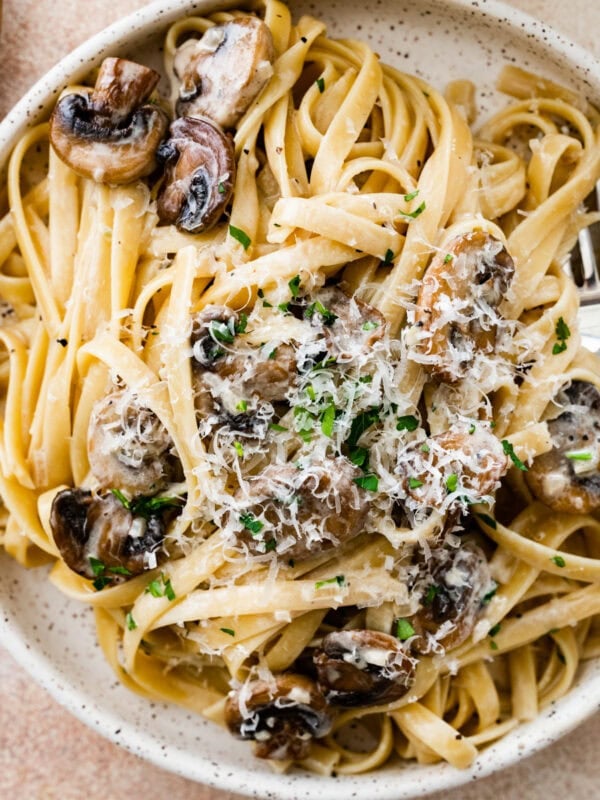
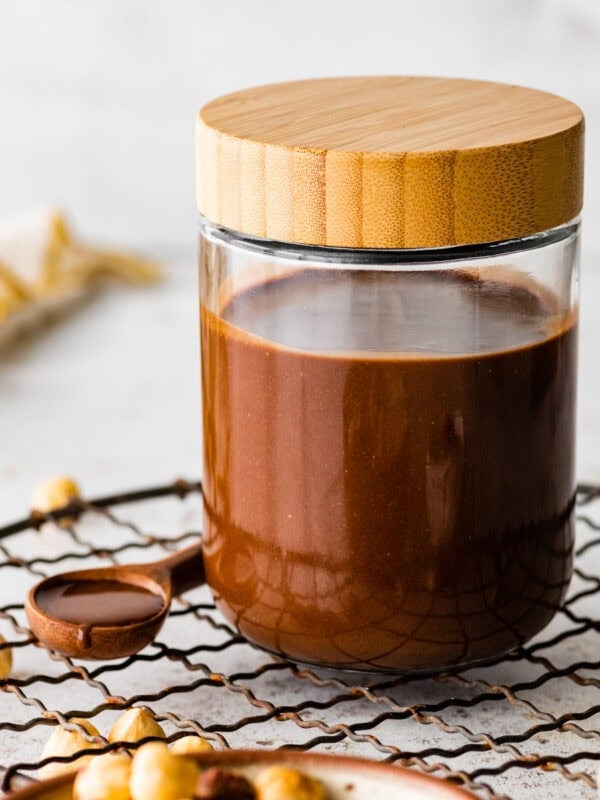




Thanks for sharing this absolutely delicious recipe!
You are most welcome. I’m happy you loved it.
You will love this authentic pistachio pesto! It is good on everything!